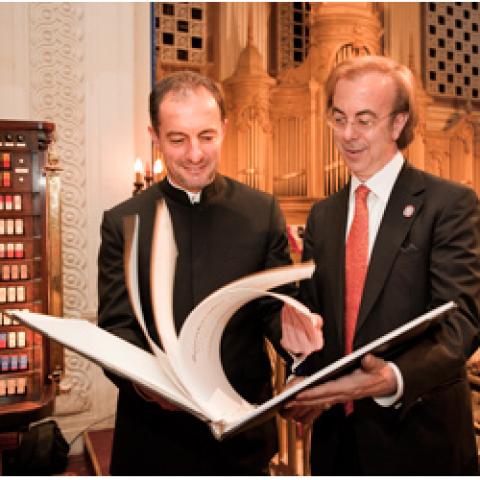
Macon, GA -- Wesleyan’s Goodwyn-Candler-Panoz organ, the largest musical instrument in central Georgia, will return to campus next week. The majestic 1925 instrument’s $1 million dollar restoration is nearly completed. Wesleyan invites the community to celebrate the re-designed and expanded instrument through a dedication ceremony with Peter Richard Conte in concert on Thursday, October 2, 2008 at 7:30PM. Conte is the Grand Organist of the world-famous Wanamaker organ at Macy’s Department Store in Philadelphia, home of the world’s largest playing organ. The dedication event is free and open to the public!
The nearly 5,000 pipes of the Goodwyn-Candler-Panoz organ were packed in crates and sent to the Schantz Organ Co. in Orville, Ohio for repairs, cleaning, and re-voicing. The removal of the organ took 10 days and the work in the organ shop was completed over the past eight months. The organ is scheduled to return to Wesleyan’s campus on July 14, 2008. The reinstallation will take about three weeks and a team from the company will stay for an additional seven weeks voicing and tuning each pipe individually so that they sound properly in the auditorium. The largest pipe of the organ, at a height of 32 feet, is the largest single organ pipe in the mid-state.
“Wesleyan's 1925 Aeolian organ is a superb example of the American orchestral organ that was being built in the early twentieth century,” according to Wesleyan College Assistant professor of Music Michael McGhee, D.M. “Organs like the one in Porter Auditorium are rare because organ-building practices changed dramatically later in the twentieth century and many organs from the early 1900's were replaced with a different style of instrument.”
Originally, Wesleyan’s 72-rank Goodwyn-Candler-Panoz organ was a gift to the school by Asa Candler, Jr., the son of Coca-Cola's founder. The current $1 million renovation project is possible through a generous donation from Nancy C. Panoz, a friend of the College who was honored in 2003 when she received an honorary doctor of commercial science.
The American Guild of Organists has designated 2008-2009 as the International Year of the Organ. Churches and music organizations across the world will offer special programs on or around Sunday, October 19, 2008 through the International Organ Spectacular. Wesleyan will play special tribute to the International Organ celebration through several events, including the dedication ceremony and concert, plus a Macon Symphony Orchestra Masterworks event with Wesleyan Organist and Assistant Professor of Music Dr. Michael McGhee on October 18, 2008 at 8PM in the Wesleyan College Porter Auditorium. This event will feature a performance of Guilmant’s Symphony for Organ and Orchestra, op. 42. For information and tickets, call Macon Symphony Orchestra 301-5300.



